Ozone, or O3, is simply a supercharged form of oxygen, and is often referred to as nature’s own purifier. In nature, oxygen is regularly transformed into ozone through forces such as lightning, or as ultra-violet light from the sun strikes the earths atmosphere.
The regular oxygen molecule that we breathe is referred to as O2. Ozone is essentially O2 with an extra oxygen atom attached. That is where the O3 designation comes from. Nature has been creating O3 for millions of years as a natural sanitizer. After a short period of time the O3 molecule will revert back to O2, regular oxygen, leaving no residue.
In high levels ozone has a blue color, which is why the sky is blue. It was discovered in the 1800’s and is classified as the 2nd strongest oxidizer in the world and has been used over the last century to purify water, air, and eliminate a wide range of odors.
Pure ozone is light blue in color and has a sharp, fresh smell like freshly cut hay or chlorine — the fresh, clean scent that follows a thunderstorm is largely due to increased ozone in the air.
Is ozone safe?
Yes. In fact, many hospitals around the world use large ozone generators to decontaminate operating rooms between surgeries. The rooms are cleaned and then sealed airtight before being filled with ozone which effectively kills or neutralizes all remaining bacteria. Even though ozone is safe, at very high concentrations it can be irritating to mucous Generators should only be used in unoccupied spaces.
About Odors

Pet urine, hair, dust — know someone house's that smells like a kennel?
Odors are everywhere. Just think about the unpleasant odors you may encounter on any given day like:
- Cigarette Smoke
- Mold & Mildew
- Smoke Damage
- Food Odors
- Beverage Odors
- Decaying Matter
- Pet Odors
- Carpet Cleaning
- Damp Basements
Although odors come from a variety of sources, they all have the same thing in common. They are all airborne particulates which will remain airborne and potentially hazardous (mold, mildew, bacteria) until treated.
Ozone blast eliminates odors and the things that cause them at their source. Ozone is effective at oxidizing odors and killing the origin of the smell whether it is mold, mildew, or bacteria caused from decaying animals, etc. Ozone blast does not use chemicals or fragrances to mask the odor problem which often can be more objectionable than the original odor being treated. These units attack the source head-on. And because there are no chemicals, Ozone blast is a safer solution to odor problems.
About Bacteria & Viruses
Ozone’s formula was determined in 1865 and its use in industrial processes has increased significantly in recent years. Ozone is an extremely powerful oxidant, yet it does not harm the environment or leave behind toxic by-products. It is used to for killing microorganisms in air and water sources. Hospitals around the world use ozone to decontaminate operating rooms between surgeries. The rooms are sealed airtight before being filled with ozone which effectively kills all bacteria.
Other common uses for ozone include:
- Disinfecting laundry rooms in hospitals and food factories.
- Killing bacteria on food or contact surfaces.
- Killing yeast and mold spores in food processing plants.
Ozone is unsurpassed in its ability to kill mold, bacteria and viruses. It does so without leaving behind any chemical smells or tastes.
Ozone blast offers an ideal solution for killing all airborne contaminants. Ozone blast eliminates bacteria and viruses from the air and surfaces
How It Works
The Ozone blast purifier creates ozone (O3) in a special process that utilizes an electrical current to convert normal oxygen into O3. O3 sanitizes by breaking down odors, microorganisms and other pollutants at their source. Any unused ozone converts back to normal oxygen in about an hour.
Nature creates O3 as a natural air cleaner in a number of ways. For example, if you've ever taken a walk after a thunderstorm and experienced the clean, fresh smell in the air… that’s O3 at work.

Normal oxygen (O2) molecules
with two atoms of oxygen.

An electrical current such as lightning transforms oxygen (O2) molecules into ozone (O3), activated oxygen.

Ozone (O3) breaks back down
into oxygen (O2), as extra atom attaches to polllution molecule.

Each extra oxygen atom oxides odors and pollutants.
Some Important Considerations
With Ozone blast, you can say good-bye to strong fragrances and deodorizers that simply cover up odors. Ozone blast uses the power of ozone to get rid of odors fast and easy without chemicals. Simply close off the area to be treated and let the Ozone blast do its work. With the turn of a dial, it attacks odors at their source and leaves your space smelling fresh and clean.
About Mold & Mildew
We are all familiar with the musty smell of a damp basement or areas with poor ventilation. In most cases the cause of such odor are mold and mildew. Mildew and molds are fungi — simple microscopic organisms that thrive anywhere there is a moist environment. The term mildew is often used to generally refer to mold growth.


Mold spores are a common component of household and workplace dust. However, when mold spores are present in large quantities, they can present a health hazard to humans, potentially causing allergic reactions, respiratory problems, and in severe cases, even death. Molds can thrive on many organic materials, including clothing, leather, paper, and the ceilings, walls and floors of homes or offices with poor moisture control.
Ozone Blast offers an ideal solution to get rid of the musty smell and odors caused by mold. Ozone blast eliminates mold and mildew odors and kills them at their source.

